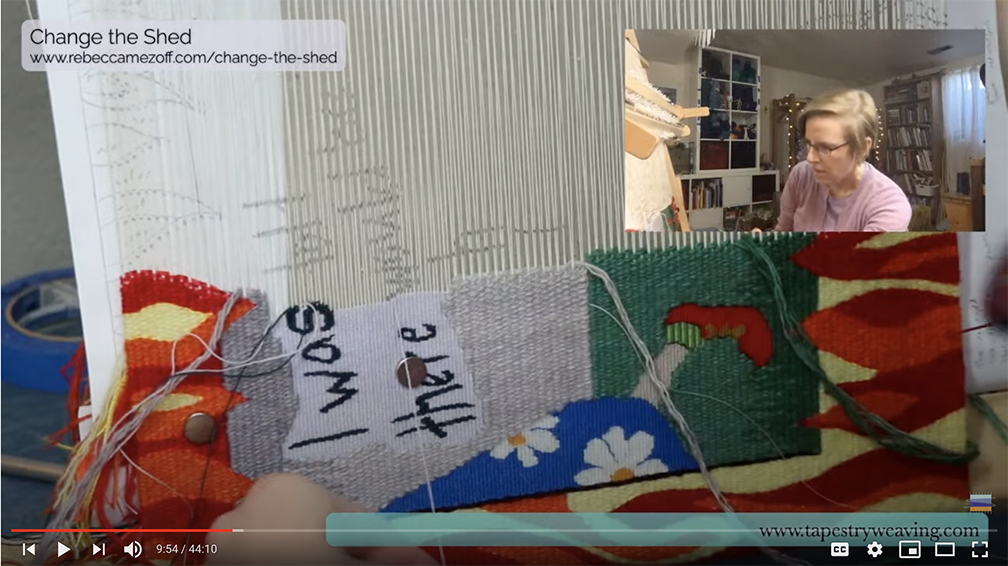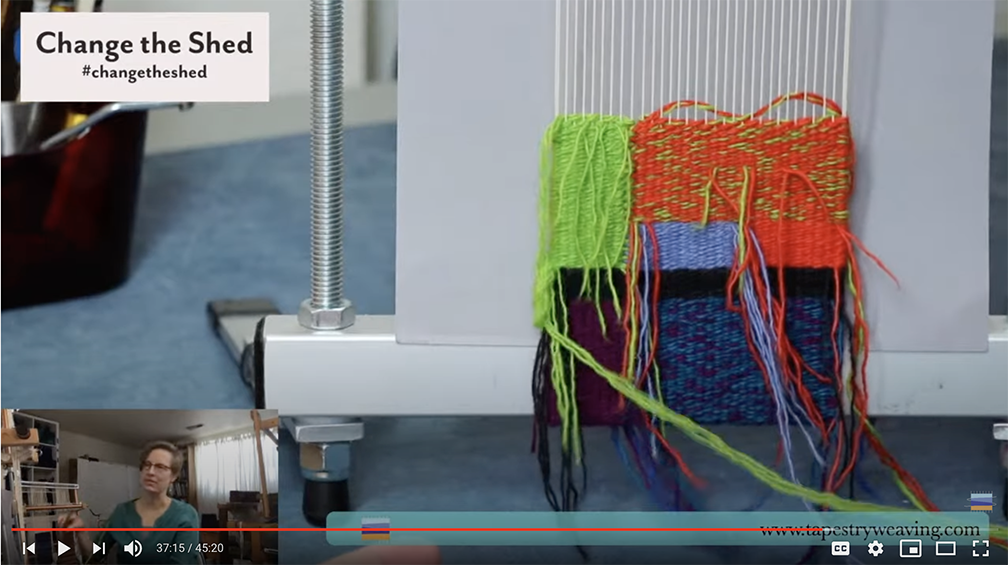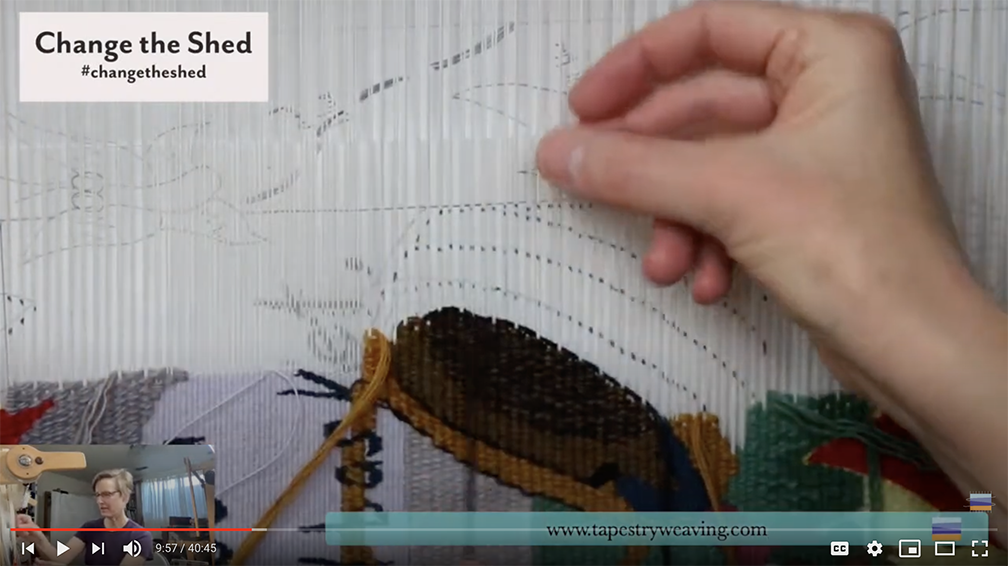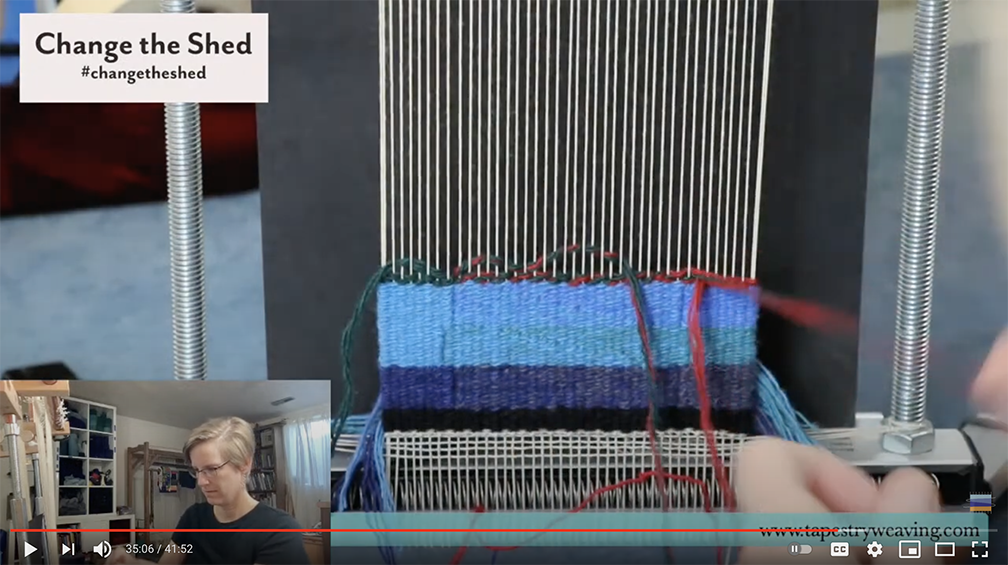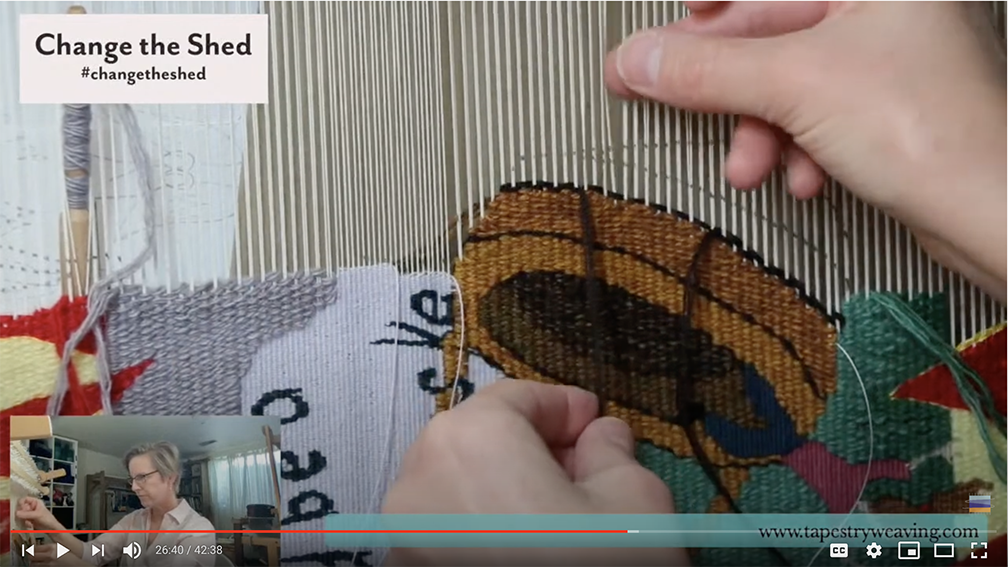Change the Shed Episodes January through June, 2021
Group 5
Episode groups
Group 1: March 27, 2020 through April 17, 2020
Group 2: April 20, 2020 through May 27, 2020
Group 3: June through September, 2020
Group 4: October through December, 2020
Group 5: January through June, 2021
Group 6: July through December, 2021
Group 7: January through June, 2022
Group 8: July through December, 2022
Group 9: January through June, 2023
Group 10: July through December, 2023
Group 11: January through December, 2024
Group 12: January through December, 2025
Return to main Change the Shed page
Many episodes have photos or links for more information about what I was talking about under the summary. Donation button for Change the Shed is on the top of THIS page if you’re interested in helping support the technology and time taken to make this free program happen. Thank you!
Wednesday, January 6, 2021 is HERE. I worked on a sample grading red-violet toward blue-green for the new season of Design Solutions for the Artist/Weaver which opens January 11th.
ACID WOOL DYES
I failed to mention that I’m working on an online course about using acid wool dyes for tapestry yarns. The companies that I talked about were Prochemical and Dye and their acid wool dye is called Sabraset. The other company is EarthGuild and their dye is the same chemically and is called Lanaset.
TEXTILES AND TEA FROM HANDWEAVERS GUILD OF AMERICA
This is a new program from HGA which is free. They’re interviewing textile artists. The first one was yesterday and they interviewed Mary Zicafoose. You can find them on their Facebook page and I think they will be on the HGA website also. I am doing one on Tuesday the 26th of January. You can register to attend from their website HERE.
BARBARA BURNS’ HANDBASKET TAPESTRY
Barbara Burns is doing a big tapestry with an image of Uncle Sam in a handbasket with flames (this came up because I’m working on a Handbasket tapestry myself). Her Instagram is https://www.instagram.com/burns.studio/.
Tuesday, January 19, 2021 is HERE. I worked on the Handbasket tapestry that has two setts at once. I added a second shedding device to the Schacht Arras Tapestry Loom and was experimenting with that.
RARE EARTH MAGNETS
I really complained about my rare earth magnets. I won’t tell you where I got them because you shouldn’t buy these! But there are so many tapestry weavers who use them, that there have to be better ones out there that won’t fracture and aren’t quite so strong. Regina Mason offers this link and review: These are for 1/2” ones, they are plenty strong to hold the cartoon, and at times, still a bit strong for fingers or will jump toward something metal. But, overall, I’ve been okay with them. I was notably injured by an uncoated one that shattered, took weeks to heal. Be very aware, they will do serious damage inside a child or pet that eats them.
https://www.kjmagnetics.com/proddetail.asp?prod=D84PC-AST
RIGID HEDDLE LOOMS AND YARNWORKER SCHOOL
Liz Gipson is a brilliant teacher and master of rigid heddle weaving. You’ll want to look up her Yarnworker school if you’re interested. I’m one of her Patreon members and I’ll say that I highly recommend becoming part of her group if you want to learn rigid heddle weaving.
I also mentioned rigid heddle looms and their usefulness for tapestry weaving in this episode. I talked about the Schacht Cricket loom and the Ashford looms.
Wednesday, February 3, 2021 is HERE. I worked on the Handbasket tapestry on an 8 epi section doing eccentric outlines. Woven on the Schacht Arras Tapestry Loom. We talked about unweaving, potential words for that, and I talked a tiny bit about tools.
TOOLS (HAND TIP FROM ARTISAN BOBBINS)
I was using a Magpie Woodworks tapestry fork (the little size) and a hand tip by Artisan Bobbins in the UK (the thing that works like an awl). Weaversbazaar also carries Artisan Bobbins. (Just as a reminder, I do not get any reimbursement for mentioning the tools I like from any company with one exception. I have a small affiliate agreement with Mirrix if you buy the “Rebecca package”… which definitely explains why I have so many Mirrix looms!)
Wednesday, Feb 17, 2021 is HERE. I worked on the Handbasket tapestry again and talked about how to mix the 8 and 16 epi sections in a spot where there are letters (small forms).
Tools mentioned (hand tip from Artisan Bobbins)
I was using a Magpie Woodworks tapestry fork (the little size) and a hand tip by Artisan Bobbins in the UK (the thing that works like an awl). Weaversbazaar also carries Artisan Bobbins. (Just as a reminder, I do not get any reimbursement for mentioning the tools I like from any company with one exception. I have a small affiliate agreement with Mirrix if you buy the “Rebecca package”… which definitely explains why I have so many Mirrix looms!)
Wednesday, March 3, 2021 is HERE. I worked on the Handbasket again and did some taking out of shapes and reweaving while I told you why I was doing it. We also talked about warping upright and horizontal floor looms (large looms) and some resources for how to do that.
Tommye Scanlin’s blog and post about warping haute lisse loom
Tommye’s blog is HERE. I can’t find the post I think I’m remembering right now, but search away! I wrote this post the very first time I warped my LeClerc Gobelin loom. So I’d now say that this isn’t the only way to do this! We also talked about Kathe Todd-Hooker’s So Warped. That book is HERE.
Thanks to Marcus for this link: http://tapestryshare.blogspot.com/2014/04/tissart-tapestry-loom-warping-one-method.html
Deborah Chandler’s Learning to Weave
This is how I learned to warp a floor loom. Still a great book. THIS one. She has since published a few more books through Thrums Publishing about Guatemala—highly recommended.
The Art of Tapestry Weaving by Rebecca Mezoff
Just mentioning my book (which we did talk about a few times in today’s episode)! More info from my site HERE or purchase it HERE.
Wednesday, March 17, 2021 is HERE. I showed some samples for a large tapestry as well as weaving on a sample about simultaneous contrast for Design Solutions for the Artist/Weaver, Season 2, my online course about designing for tapestry weaving. We also talked about yarn color names and some ways to communicate with other humans about what a color actually is.
Making finger skeins
I couldn’t remember where I had a video about this while we were live, but there is a YouTube video about how to make finger skeins and why HERE.
Spin-Off Winter 2021 article by Heavenly Bresser
We were talking about yarn structure and ply as well as singles versus 2-ply when twisting yarn and laying it in. Someone mentioned this article in Spin-Off called Opposing Plies and the Quest for Elasticity. Right away that title should scare you away from using this idea to make yarn for tapestry. The concept is fascinating and I am excited to try this for some knitting yarn, but I don’t think making the yarn feistier is a great idea for tapestry weaving.
Record keeping on my blog
Blog post from last week about sampling and record keeping. Sampling is something I do for dyeing, but I also do a lot of woven samples. The post is HERE.
Wednesday, March 31, 2021 is HERE. I worked on Handbasket again. I talked about changing the design as I get near the end because of hope in the new year. I showed some eccentric outlining including how to shift the shed (even though I then discovered I didn’t need to shift it). I also talked about changing the color in a form and whether to make it darker or lighter (value).
Tapestry forks
Threads Thru Time: https://www.etsy.com/shop/Threadsthrutime?ref=usf_2020
Magpie Woodworks: https://magpiewoodworks.com/
Crapaud
My editor kindly provided this wikipedia link. It is a French word meaning “toad”. https://en.wikipedia.org/wiki/Crapaud. Also it appears that though there are many ways to say this, I still am not pronouncing it anywhere near correctly. This will not surprise my French students one bit!
April 14, 2021, is HERE. I showed some small tapestries I’m weaving on the Mirrix Saffron loom. I was playing with pick and pick using different colors. I also talked about a new tapestry yarn that I’m testing that is made in the USA and will be launching sometime this year from GIST Yarn.
Scouring Harrisville yarns
See the blog post HERE.
Ways to secure the cartoon
I talked some about rare earth magnets and what to look for if you want to use them (and cautions if you have small kids or pets around who might eat little dangerous things). I also mentioned stitching on your cartoon which is traditional, or using hem clips which I showed. THESE are the ones I got, but there are lots of them out there. They are for sewing.
Mirrix Saffron loom
I talked about the Saffron a fair amount in this episode. I like this loom the best with the extended rod that Mirrix sells separately (or you can go get one at the hardware store in any length you want). Additionally, I wrote a blog post about this loom HERE.
April 28, 2021 is HERE. I worked on a small pick and pick project on a Mirrix Saffron loom. I started with simple pick and pick and then started doing some shaped work with curves. I made plenty of mistakes and talked about why I was doing what I was doing.
Aubusson bones
Someone asked about a source of Aubusson bones. Kate Horner graciously gave me these two resources: https://www.michael-williams-wood.co.uk/sitefiles/weaving.htm and https://www.weaversbazaar.com/product-list/double-ended-bobbins Both are in the UK.
Color Gradation Techniques for Tapestry
I mentioned one of my online courses where I teach shaped pick and pick, Color Gradation Techniques for Tapestry. More information is HERE.
The Art of Tapestry Weaving
We talked about a page in the pick and pick section of my book, The Art of Tapestry Weaving, where there is a Tech Talk box about double weft interlock. I have never used double weft interlock with pick and pick but I’m not 100% sure it isn’t possible. That box is placed there for lay-out reasons and is not related to the pick and pick section (page 210). By the way, double weft interlock is a brilliant technique and is the sole reason a lot of people weave from the back. It is not covered in the book (ran out of room, and it is woven from the back).
May 12, 2021 is HERE. I worked on a sampler of color blending for the Design Solutions for the Artist/Weaver, Season 2 course. Mixing colors in the weft bundle is a really fun way to shift the perceived color of a woven area and I show various combinations in this episode.
May 26, 2021 is HERE. Today I worked on Handbasket again. It is time to get this tapestry finished! I talked about shedding problems, showed an eccentric weft outline. There are several other tips scattered throughout and I even sewed a slit at one point.
Learning more about tapestry weaving
I mentioned a course I teach, Warp and Weft: Learning the Structure of Tapestry where I teach the concepts I was talking about today.
June 9, 2021 is HERE. Today I worked on Handbasket again with the goal of finishing it by the end of the month. Next week I plan to work on the butterfly. I talked quite a bit about ergonomics in this episode.
Wellness for Makers
We talked about ergonomics in this episode. I recommended Wellness for Makers which is a business run by Missy Graff Ballone. She has lots of exercises and tips for people who make things to keep their bodies safe. She also has a podcast and I just saw a mini course about shoulders that is free right now.
Knitting Comfortably
I mentioned Carson Demers’ book, Knitting Comfortably. Carson is a PT and a knitter/spinner and this book is fantastic. It is well worth the price if you make things. He has tips for your whole body and I think it applies to weavers also. You can get it from his website https://www.ergoiknit.com/knitting-comfortably.
June 23, 2021 is HERE. Today I worked on Handbasket and it is not finished yet! I did work on the butterfly and talked about ways to do various forms, pigtails, and showed some decision-making points as I weave like the order the weaving has to go in. I showed the back of Hot Flash and talked some about how I finished it.


